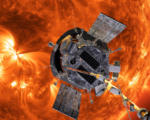Robotic Innovations by NASA to Enable Autonomous Ocean World Exploration

NASA is making significant strides in developing autonomous spacecraft technologies aimed at exploring “ocean worlds,” such as Europa and Enceladus, which are among the most promising locations for discovering extraterrestrial life. These celestial bodies, characterized by subsurface oceans beneath icy crusts, present unique challenges for robotic exploration. To tackle these hurdles, NASA has introduced advanced testing platforms, including the Ocean Worlds Lander Autonomy Testbed (OWLAT) and the Ocean Worlds Autonomy Testbed for Exploration, Research, and Simulation (OceanWATERS). These initiatives are pivotal in preparing spacecraft for missions to these distant and inhospitable environments.
OWLAT, developed by NASA’s Jet Propulsion Laboratory (JPL), provides a physical testbed for simulating lander operations in conditions similar to those on Europa. It includes a robotic arm equipped with specialized tools for sampling and analyzing icy surfaces. The testbed also features a Stewart platform, which mimics the low-gravity dynamics of ocean worlds. This setup allows researchers to evaluate how robotic systems will interact with rough, uneven terrain while ensuring they can operate safely and effectively under extreme conditions.
On the other hand, OceanWATERS, created at NASA’s Ames Research Center, offers a complementary virtual testing environment. This software-based platform replicates Europa’s icy landscape and subsurface ocean conditions, enabling mission teams to design and refine autonomous operations without the need for physical prototypes. By simulating long communication delays and limited energy resources, OceanWATERS prepares robotic systems to perform critical tasks such as drilling, sampling, and transmitting data back to Earth with minimal human intervention.
Together, OWLAT and OceanWATERS represent a comprehensive approach to overcoming the obstacles associated with exploring ocean worlds. These technologies focus on enhancing spacecraft autonomy, a critical requirement for missions operating billions of miles away from Earth. By advancing these systems, NASA aims to pave the way for groundbreaking discoveries that could reveal whether life exists beyond our planet, making these efforts a cornerstone of future extraterrestrial exploration.





















